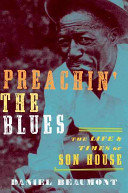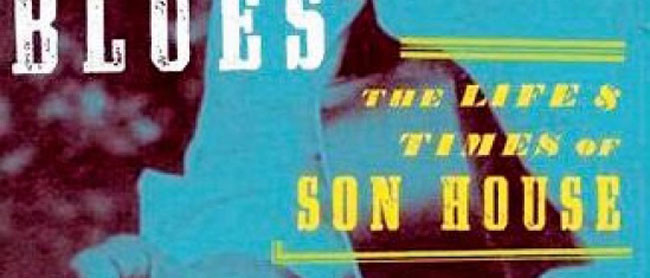This is the third and final of three reviews in a week-long series on new biographical books of delta blues men, written by Mike Rugel, who hosts the Uncensored History of the Blues for the Delta Blues Museum
 Son House lived a life as intense as the music he played. In Preachin’ the Blues, University of Rochester professor Daniel Beaumont puts Son’s unique and amazing story together. With one extremely notable exception, there’s not much new here. Fans who have read about Son House know the story of his never-ending conflict between the church and the blues, his early recordings, his troubles with alcoholism, and his 1960s comeback. Because House’s music was so prolific, his story is one certainly worth retelling, and Beaumont does a good job.
Son House lived a life as intense as the music he played. In Preachin’ the Blues, University of Rochester professor Daniel Beaumont puts Son’s unique and amazing story together. With one extremely notable exception, there’s not much new here. Fans who have read about Son House know the story of his never-ending conflict between the church and the blues, his early recordings, his troubles with alcoholism, and his 1960s comeback. Because House’s music was so prolific, his story is one certainly worth retelling, and Beaumont does a good job.
Son House worked as a preacher before taking up the blues. He was never entirely comfortable with the conflict between the blues and the church, and that seems to show in every aspect of his life. His first recording session in 1930 was the culmination of a wild trip with Charley Patton, Willie Brown, and Edith Johnson. He recorded only six songs, but they became classics of Mississippi Delta blues. In 1964, they inspired record collectors Nick Perls, Dick Waterman, and Phil Spiro to seek Son out, eventually finding him in Rochester, New York.
Writers have far more sources for the rediscovery period then they do for these artists’ formative years. What shaped the young Son House in Mississippi is probably the most fascinating aspect of this story, but limited sources keep it from being told in full. However, Beaumont does a good job piecing together a highly readable narrative of House’s life, primarily using interviews he gave in the 60s that leave inevitable holes.
Beaumont’s one breakthrough is his research of a 1955 incident where House was brought to trial for manslaughter after killing a fellow worker at a migrant labor camp on Long Island, New York. House was set free when the jury apparently ruled that the stabbing was an act of self-defense. Beaumont’s other triumph is his description of House’s Rochester years surrounding this incident. It’s always been curious to me that House ended up in Rochester rather than more common destinations for native Mississippians looking for work like Chicago or Detroit. Beaumont places House’s life in the historical context of black Rochester and depicts vividly the oddness of the influx of white blues fans into that life after House’s return to playing music professionally.



2 Comments
Hey there,
Love the Son House page.
Just sending you on this homage too…
http://www.youtube.com/watch?v=O8yXYYyG_YU&feature=channel_video_title
Thanks, Dylan! “Grinnin’ in your Face” is one of the most powerful and revered songs to have come from the blues, with covers by Gov’t Mule, Bob Dylan, The White Stripes, Ruthie Foster, The Pointer Sisters, and many more. Haunting, reverential, but still somehow ominous sounding, it’s a mysterious, paradoxical song, and one of the best musical summations of the contradictory life of House.